- Home
- Don Pendleton
Frontier Fury Page 2
Frontier Fury Read online
Page 2
He had a pistol tucked under his belt, beneath his Windbreaker, for self-defense. It was a Czech CZ-75, purchased at one of the province’s countless illegal gun markets, along with the AKMS folding-stock rifle concealed in the trunk of his car.
If the army or state police found him, however, the best thing Gorshani could do for himself was to whip out the pistol and fire a 9 mm bullet through his own brain. Spare himself the agony of interrogation that would last days, or even weeks, until the torturers were satisfied that they knew all his smallest secrets.
Or, he could fight to defend the stranger and himself. Try to flee and escape. Depending on the Yankee soldier’s skill, they might just have a chance.
Gorshani saw a subtle glint of sunlight on the nylon parachute, but still had trouble making out its shape against the blue background of sky. No doubt, it was designed that way on purpose, and he hoped that any unseen watchers in the neighborhood would likewise be deceived.
There was no trade route through this portion of the North-West Frontier Province, but some peasants brought their goats and sheep to graze along the hills in spring and summer. None had been in evidence when he made his approach, but still Gorshani watched for them, prepared to warn them off with threats if necessary while his business was accomplished.
Glancing upward, squinting in the sunlight, he supposed the stranger had to be five or six hundred feet above the ground. What would it feel like, falling from the sky like that? he wondered.
Better than plunging from a helicopter during an interrogation, he supposed, a trick the state police had learned from both the CIA and KGB. It was a technique that produced no answers from its chosen subject, but the prisoners who watched one plummet to his death often became quite talkative as a result.
Two hundred feet, Gorshani guessed, and now he could begin to make out details of the stranger: boots, a smudge of face behind goggles, weapons secured by straps and holsters, and he was wearing sand-colored camouflage fatigues.
One man against the State—or two, if Gorshani counted himself.
Of course, he and this stranger weren’t really opposing the government based in Islamabad, simply conducting an end run around its two-faced policy of protecting fugitive terrorists while pretending not to know they existed.
It was a policy that shamed Gorshani’s government, his nation—and, by extension, himself. As a patriot and loyal Muslim, he had determined to work against that policy through any means at his disposal. And if that put him at odds with certain politicians or their lackeys, then, so be it.
He was not the traitor in this case.
Clenching his fists, hearing his pulse pound in his ears, Gorshani stood and watched the stranger, his new ally, fall to Earth.
“THERE, SIR! To the west! I see it!”
Second Lieutenant Tarik Naseer turned in the direction indicated by his havildar—the Pakistan army’s equivalent to a sergeant—and saw a speck descending toward the ground. Naseer raised his field glasses to focus on the falling object.
“Yes!” he said, well pleased. “It is a parachute. One man alone.”
“We’ve lost the plane, sir,” said Havildar Qasim Zohra.
“No matter,” Naseer said. “We’ll have the man himself. Before we’re finished with him, he will tell us where he came from and whatever else we wish to know.”
The second lieutenant turned and shouted to his soldiers—ten of them standing beside their Russian-made BTR-70 armored personnel carrier.
“Forward with me!” he called. “We go to capture an intruder!”
That said, Naseer took his seat in the open Scorpion Jeep. Havildar Zohra took the wheel and put the Jeep in motion, rolling over open ground toward the area where it seemed likely their target would touch down.
Scanning ahead through his binoculars, Naseer saw that a one-man welcoming committee waited for the parachutist, staring up at the descending jumper from the shadow of a dusty old Mahindra Bolero SUV.
The watcher had not seen them yet. Naseer hoped he could close the gap in time to nab the men without a fight, but there was still a river in his path, its only bridge offset a half mile to his right.
Naseer could try to ford the river in his Jeep, trailed by the APC, but either vehicle could easily bog down, perhaps even be swept away if he misjudged the current. He knew that trying to explain that to headquarters would not be good for his career!
Another possibility was to remain on this side of the river and attempt to kill their targets without questioning the men. The BTR-70 had a 7.62 mm machine gun mounted atop its main cabin, and his soldiers carried AK-107 assault rifles. Their concentrated fire should drop both targets, or at least disable the Mahindra SUV, but Naseer would be held responsible if anything went wrong.
And if he simply shot the two men without first interrogating them, how would he then identify the parachutist, much less learn what brought him to the North-West Frontier Province?
No.
If possible, he needed to procure both men alive. Failing in that, at least the jumper had to be captured and interrogated.
That decided, Naseer made his choice.
“The bridge,” he told Zohra. “As fast as you can reach it!”
“Yes, sir!”
Zohra never disputed orders, though he might suggest alternatives if he believed Naseer—twelve years his junior, and with only eight months as an officer—had made the wrong decision. In this case, however, it was clear they only had one way to cross the river and approach their targets.
Which, unfortunately, gave the enemy more time to spot them and escape.
But first, the watcher had to meet his comrade, who was still at least two hundred feet from contact with the ground.
Naseer picked up the compact two-way radio that lay between the driver’s seat and his, half-swiveled in his seat as he thumbed down the button to transmit, and called out to the APC behind him.
“Lance Naik Shirazi!”
“Yes, sir!” the APC’s gunner replied.
“Prepare to fire, at my command. Take no action without direct orders.”
“Yes, sir!”
Behind Naseer’s Jeep, the young crewman—ranked on par with a lance corporal—rose through a hatch atop the APC’s cabin and readied the vehicle’s machine gun, clearing its belt, jacking a round into its chamber.
Naseer still hoped he would not have to kill the strangers, but he would disable their SUV if they tried to escape. Short bursts aimed at the tires, perhaps, or at the fuel tank.
Though the risk of blowing up the vehicle existed, bullets rarely started gasoline fires in such cases. It happened much more frequently in films than in real life.
Naseer clenched his fists as Zohra swung the Jeep away from their targets, accelerating toward the bridge that now seemed more distant than before. Each yard they traveled in the opposite direction felt like a concession to the enemy, as if they were retreating, rather than advancing by the only route available.
He mouthed a silent prayer—Don’t let them see us—but would Allah hear him and respond? He couldn’t help but wonder if such a trivial request, offered in haste, would even concern Him.
Naseer tried again: for Your great glory and the safety of our nation, let us stop them!
Better, but he could not let the matter shift his focus any further from the mission set before him.
It had been a bland, routine patrol in search of rebels, finding none, until Naseer had heard the distant droning of an aircraft far above their heads. It seemed to come from everywhere and nowhere, all at once, like the infuriating whine of a mosquito buzzing past his ear, while he lay hoping merely for a good night’s sleep.
Even with his binoculars, the plane proved difficult to locate, flying at an altitude of two miles, maybe higher. When the parachutist separated from it, Naseer barely glimpsed him, and the jumper’s terminal velocity—around three feet per second, if Naseer recalled his jump-school training accurately—made the falling object difficult t
o track through field glasses.
The sky-blue parachute, clearly, had also been selected to fool watchers on the ground. More evidence that Naseer needed to interrogate the jumper.
But he had to catch him, first.
“Faster!” he told Zohra.
“Yes, sir!”
The Jeep surged forward, pressing Naseer back into his seat.
He watched the SUV and hoped its driver would not notice them.
Hoped that they would not be too late.
BOLAN TOUCHED DOWN within fifty feet of the waiting vehicle, flexing his knees without pitching a full shoulder roll. Before his contact had covered half the intervening distance, the Executioner was stripping off the chute’s harness, hauling on the suspension lines and reeling in the nylon canopy.
“I’ll help you,” the Pakistani said, fumbling for a set of lines, snaring them on his second try.
“We ought to bury it,” Bolan replied—then glanced across the river toward a pair of speeding military vehicles and added, “But I guess we won’t have time.”
His contact turned to stare in the direction Bolan faced, and blurted out what sounded like a curse.
“Leave it,” Bolan ordered. “We need to go right now.”
They dropped the tangled lines, leaving the parachute a plaything of the breeze, and ran back toward the SUV. Bolan was faster, got there first, ignored the shotgun seat and climbed into the rear.
The Pakistani threw himself into the driver’s seat and reached for the ignition key as Bolan asked him, “Do you have a weapon?”
Reaching for his hip, where Bolan had observed a pistol’s bulge beneath the Windbreaker, the man reconsidered. “Underneath the hatch in back,” he said. “A rifle.”
Bolan found it, recognized an older model of the AKSM he was carrying and passed it forward. His companion dropped it on the empty shotgun seat and put the SUV in motion, fat tires churning dirt and gravel in their wake as he accelerated from a standing start.
How long before the soldiers reached the bridge, then doubled back along the route to overtake them? Bolan made the calculation in his head and guessed that they had five minutes to put more ground between themselves and their pursuers now, before the race turned into life or death.
Five minutes wasn’t much.
He doubted it would be enough.
“Where are we going?” Bolan asked his driver.
“North, eventually. If we are not killed or captured.”
“Let’s avoid that, all right?”
“I will do my best.”
And Bolan wondered whether that was good enough.
His plans hadn’t included taking on the Pakistan army—which, with some 700,000 personnel and another half million in reserve, outnumbered that of the United States. However, since the rulers in Islamabad permitted terrorists to hide in Pakistan and operate with virtual impunity from Pakistani soil, he had anticipated opposition from the military.
And he’d come prepared.
Bolan’s AKMS assault rifle came equipped with a stubby GP-25 40 mm under-the-barrel grenade launcher, and he carried a variety of munitions to feed it. His 75-round drum magazine gave him extended firepower for the Kalashnikov, backed up for closer work by a Belgian FN Five-seveN semiauto pistol, chambered for the high-powered 5.7 mm cartridge tailored for long range and superior penetration, with a 20-round box magazine and no external safety. His hand grenades were Russian RGD-5s, with 110 grams of TNT and liners scored to fling 350 lethal fragments over a killing radius of sixty feet.
With that gear, and his companion’s AKMS rifle, Bolan was up against a light machine gun with a range around 860 yards, and ten or twelve Kalashnikov assault weapons, likely firing 5.56 mm NATO rounds, with an effective range of 650 yards. Put all that hardware together, and his pursuers could lay down a blistering screen of some eleven thousand rounds per minute.
In theory.
In fact, however, none of the APC’s soldiers could fire while their vehicle was rolling in hot pursuit. That left the APC’s machine gunner and the Jeep’s shotgun rider, for a maximum of two weapons engaged, and the APC’s weapon had a 210-yard advantage over anything the Jeep’s rider was carrying.
Say five hundred rounds per minute for the 7.62 mm MG, and allowing for spoilage of aim, as the eight-wheeled, 11.5-ton BTR-70 pitched and rumbled on its way at top speed, and they might be all right.
Might be.
The safer plan was to remain outside the machine gunner’s 860-yard effective range, thus rendering his task that much more difficult, but that was down to Bolan’s driver—whom he’d never seen in action previously, and whose vintage SUV was subject to the same foibles as any other man-made vehicle.
Call it a race for life, then.
He was barely on the ground in Pakistan, and Bolan’s mission already hung in the balance.
They should be able to outrun the APC, with its factory-standard top speed of fifty miles per hour, but bullets were faster, and that still left the Jeep on their tail.
No matter how well his driver managed to perform, Bolan would have to derail the soldiers in the Jeep—and hope they hadn’t radioed ahead for reinforcements to establish roadblocks on the highway leading northward.
One thing at a time, Bolan thought, as he focused on the military vehicles behind him. The Jeep had just crossed the river bridge and was accelerating after them, its shotgun rider hanging on for dear life as his driver put the pedal to the floor. Another moment and the APC was after them, its turret gunner rocking helplessly behind his MG, still too far away to sight and fire.
How long could Bolan’s driver hold that slim advantage? Were his tires in decent shape? Had he maintained his engine? Was the gas tank full?
Too many questions.
Bolan crawled over the SUV’s backseat, onto the rear deck in the hatchback section. He would play tail gunner when the enemy closed in behind them.
And with any luck, he just might live to fight another day.
2
Shenandoah National Park, Virginia: Two days earlier
Skyline Drive was aptly named. It ran along the spine of the Blue Ridge Mountains for 105 miles, from Front Royal at the northern terminus to Rockfish Gap at the southern end. Because its full length was within a national park, visitors paid an entry fee of fifteen dollars per car or ten dollars per motorcycle, thus obtaining a seven-day pass.
Mack Bolan could have saved his money by displaying an ID card he’d received from Hal Brognola through a drop box, which identified the bearer—“Michael Belasko,” with a nonexistent address and a photo that could pass for Bolan’s likeness—as an employee of the National Park Service, but he’d figured why bother?
He didn’t need to see the ranger in the ticket booth look worried, wondering if he’d done something wrong, or if something critical was happening inside the park and he had missed the memo.
Anyway, the fifteen bucks made Bolan feel that he was giving something back.
Built between 1931 and 1939, at the nadir of the Great Depression, Skyline Drive was convoluted and tortuous. Scenes of epic beauty dazzled drivers all the way, but caution was required on the winding turns where bicycles and black bears shared the relatively narrow highway. Park police enforced a strict 35 mph speed limit, and Bolan didn’t want to risk a speeding rap.
Rolling through Mary Rock Tunnel, 670 feet of pitch darkness, with his headlights on high beams, Bolan wondered where Brognola planned to send him this time. There had been no warning on the telephone—there never was—and Bolan had been left, as usual, to speculate in vain.
One thing he knew beyond a shadow of a doubt—it wouldn’t be a social call.
Somewhere, somehow, someone had stepped across a line, and Bolan would be sent to reel them back or punch their ticket for one long, last ride.
He could refuse the job, of course. That flexibility was built in from the start. But in reality, he’d only turned thumbs-down on a few assignments in the time he’d worked with Brognola a
nd the assembled team at Stony Man Farm.
The Farm was named for Stony Man Mountain, the fourth highest in the park at 4,010 feet, but it wasn’t actually on the mountain. It did not appear on any map available for public scrutiny, and while it was a working farm—in more ways than one—its crops were not marketed under the Stony Man name.
Trespassing was rigorously—sometimes fatally—discouraged.
Roughly half the time, when Bolan visited the Farm, he flew in and out. Stony Man had its own airstrip and helipads, complete with stinger missiles and hidden batteries of antiaircraft guns to deal with any drop-ins who ignored the radio commands to steer clear of restricted airspace.
It had only happened once, to Bolan’s knowledge, with a careless pilot running short of fuel halfway between Pittsburgh and Winston-Salem. In that case, the guns and rockets hadn’t fired, but several days of house arrest and chemically induced amnesia left the interloper scrambling to explain how he had missed his scheduled wedding.
The groom did not live happily ever after with his bride…but at least he lived.
Some others who had trespassed at the Farm with sinister intent were not so fortunate.
Bolan cleared the tunnel and killed his headlights, braking just beyond the next curve for a line of deer crossing the road. A nine-point buck was last across, pausing to stare at Bolan for a moment through the tinted windshield of his rental car.
Bolan wondered if the deer spent their whole lives inside the park’s 306 square miles, or if they sometimes strayed outside. With hunting season on the way, he wished them luck.
So many predators, so little time.
BOLAN DIDN’T try to spot the guards staked out along his route of travel from the gate to the farmhouse that served as Stony Man’s HQ. He was expected, so went unchallenged by the Farm’s team of “blacksuits.”
At any given time, Stony Man’s security staff included active-duty members of the U.S. military who dressed as farmhands but were armed.

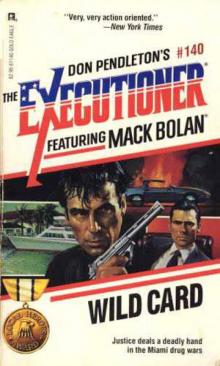 Wild Card
Wild Card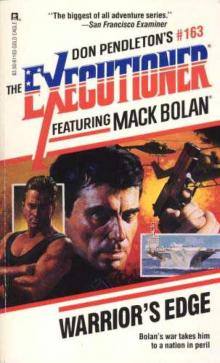 Warrior's Edge
Warrior's Edge Blood Vortex
Blood Vortex Lethal Vengeance
Lethal Vengeance Killing Kings
Killing Kings Cold Fury
Cold Fury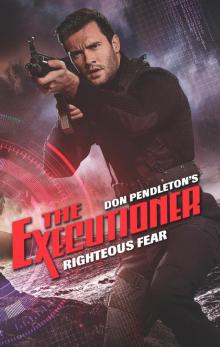 Righteous Fear
Righteous Fear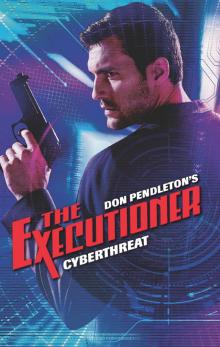 Cyberthreat
Cyberthreat Stealth Assassin
Stealth Assassin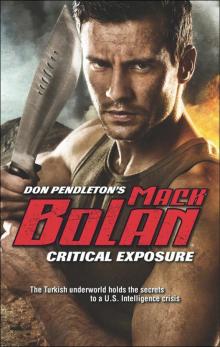 Critical Exposure
Critical Exposure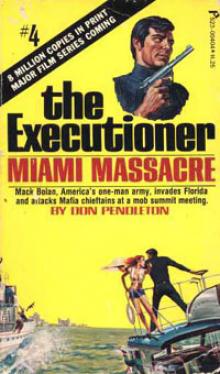 Miami Massacre te-4
Miami Massacre te-4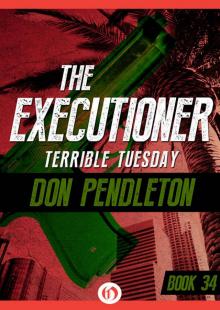 Terrible Tuesday
Terrible Tuesday Dying Art
Dying Art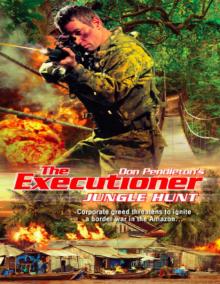 Jungle Hunt
Jungle Hunt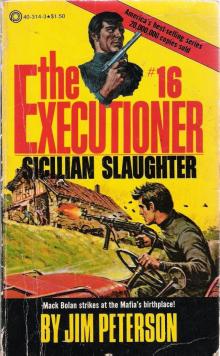 Sicilian Slaughter
Sicilian Slaughter Throw Down
Throw Down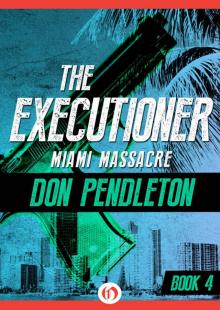 Miami Massacre
Miami Massacre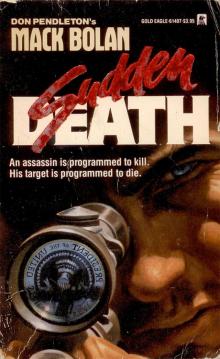 Sudden Death
Sudden Death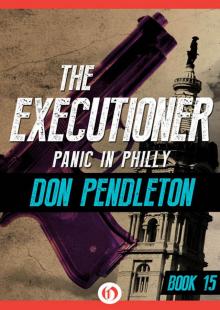 Panic in Philly
Panic in Philly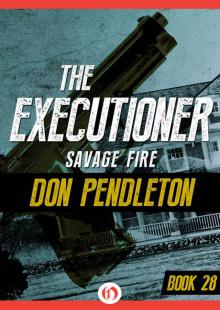 Savage Fire
Savage Fire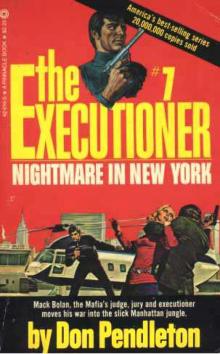 Nightmare in New York te-7
Nightmare in New York te-7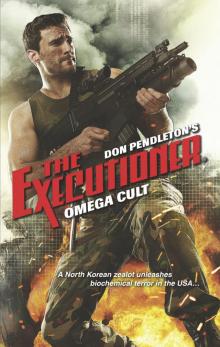 Omega Cult
Omega Cult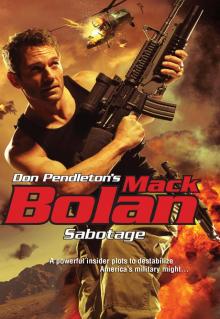 Sabotage
Sabotage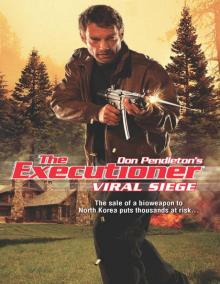 Viral Siege
Viral Siege War Tactic
War Tactic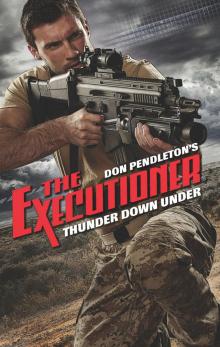 Thunder Down Under
Thunder Down Under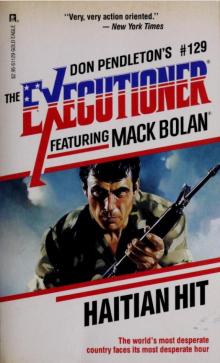 Haitian Hit
Haitian Hit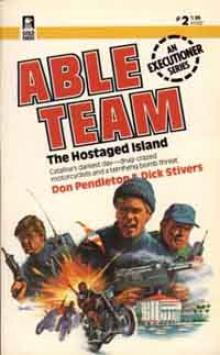 The Hostaged Island at-2
The Hostaged Island at-2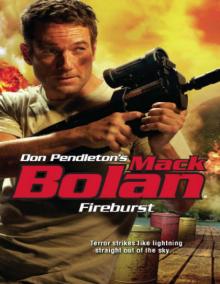 Fireburst
Fireburst The Killing Urge
The Killing Urge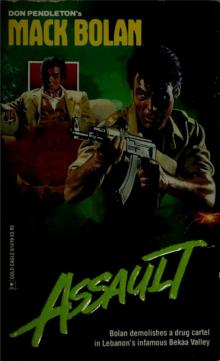 Assault
Assault Ashes To Ashes: Ashton Ford, Psychic Detective
Ashes To Ashes: Ashton Ford, Psychic Detective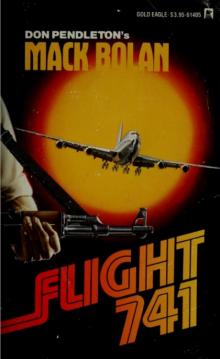 Flight 741
Flight 741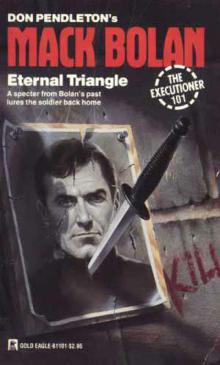 Eternal Triangle
Eternal Triangle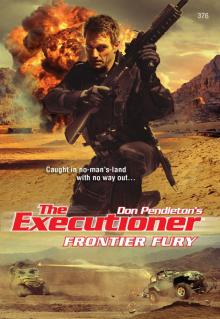 Frontier Fury
Frontier Fury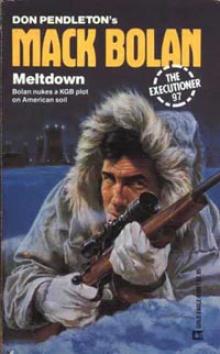 Meltdown te-97
Meltdown te-97 Chicago Wipeout
Chicago Wipeout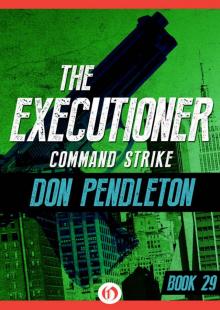 Command Strike
Command Strike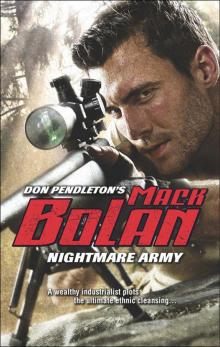 Nightmare Army
Nightmare Army Ivory Wave
Ivory Wave Combat Machines
Combat Machines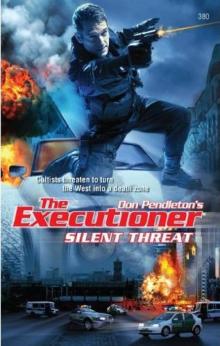 Silent Threat
Silent Threat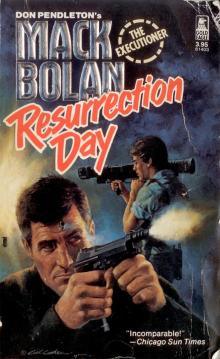 Resurrection Day
Resurrection Day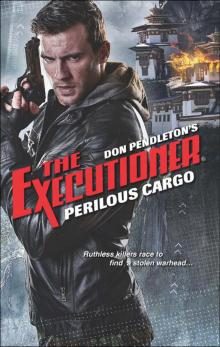 Perilous Cargo
Perilous Cargo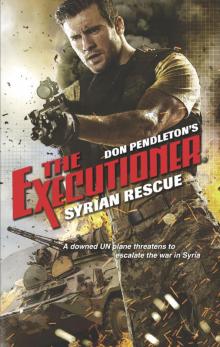 Syrian Rescue
Syrian Rescue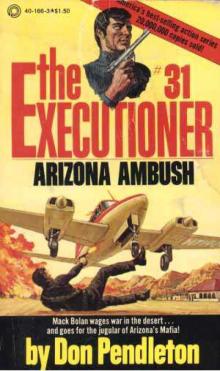 Arizona Ambush te-31
Arizona Ambush te-31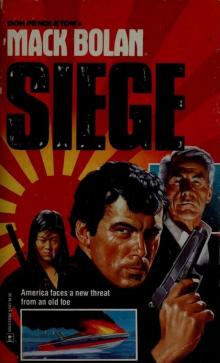 Siege
Siege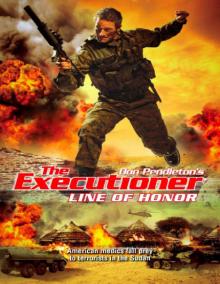 Line of Honor
Line of Honor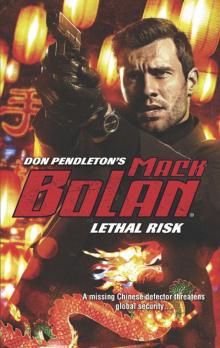 Lethal Risk
Lethal Risk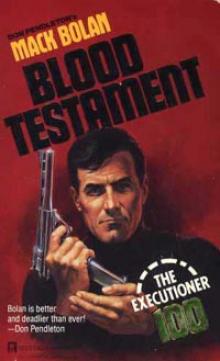 Blood Testament te-100
Blood Testament te-100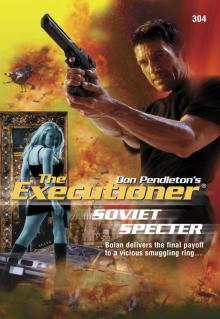 Soviet Specter
Soviet Specter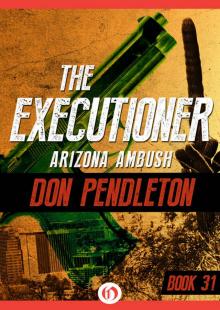 Arizona Ambush
Arizona Ambush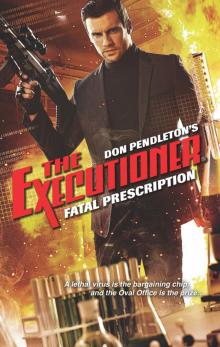 Fatal Prescription
Fatal Prescription Deep Recon
Deep Recon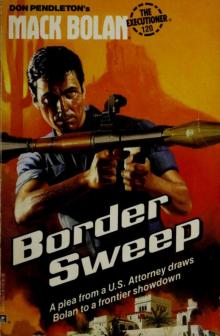 Border Sweep
Border Sweep Life to Life
Life to Life Ballistic
Ballistic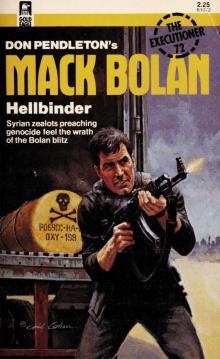 Hellbinder
Hellbinder Time to Time: Ashton Ford, Psychic Detective (Ashton Ford Series Book 6)
Time to Time: Ashton Ford, Psychic Detective (Ashton Ford Series Book 6)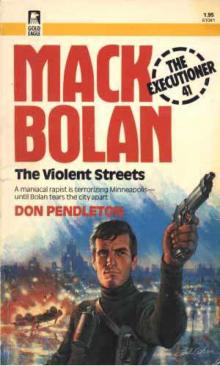 The Violent Streets te-41
The Violent Streets te-41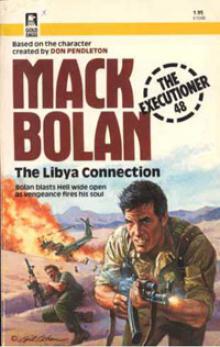 The Libya Connection te-48
The Libya Connection te-48 Cartel Clash
Cartel Clash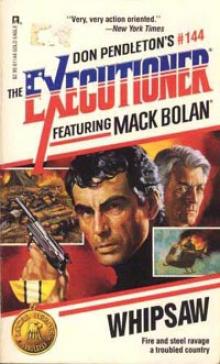 Whipsaw te-144
Whipsaw te-144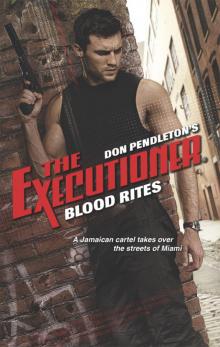 Blood Rites
Blood Rites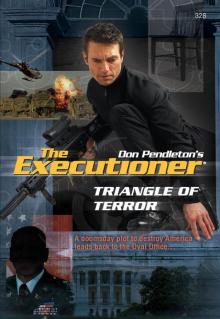 Triangle of Terror
Triangle of Terror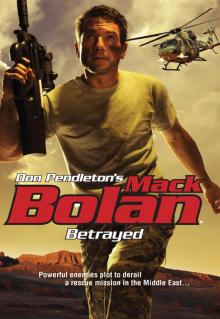 Betrayed
Betrayed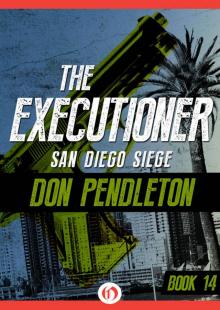 San Diego Siege
San Diego Siege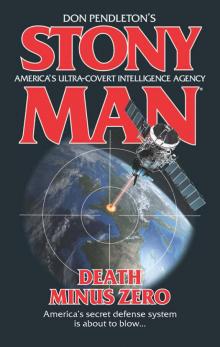 Death Minus Zero
Death Minus Zero Arctic Kill
Arctic Kill Mind to Mind: Ashton Ford, Psychic Detective
Mind to Mind: Ashton Ford, Psychic Detective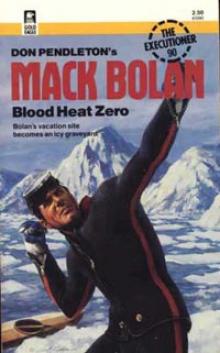 Blood Heat Zero te-90
Blood Heat Zero te-90 Dead Man's Tale
Dead Man's Tale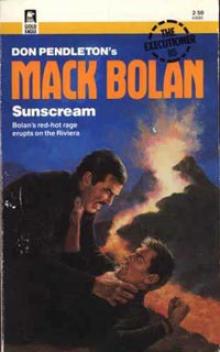 Sunscream te-85
Sunscream te-85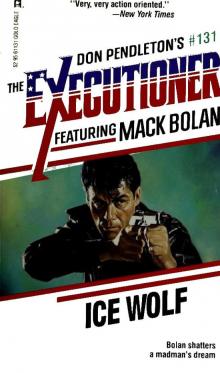 Ice Wolf
Ice Wolf Deadly Contact
Deadly Contact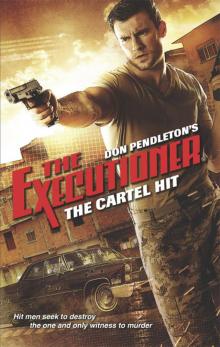 The Cartel Hit
The Cartel Hit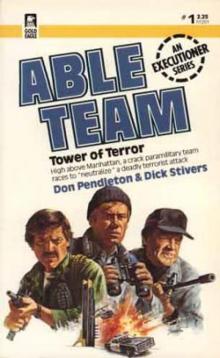 Tower of Terror at-1
Tower of Terror at-1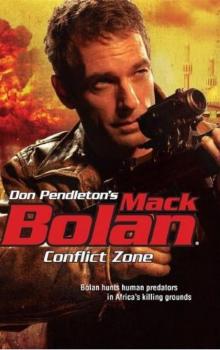 Conflict Zone
Conflict Zone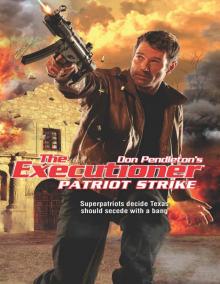 Patriot Strike
Patriot Strike Point Blank
Point Blank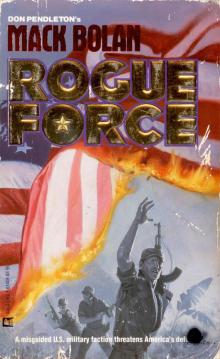 Rogue Force
Rogue Force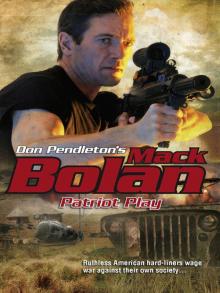 Patriot Play
Patriot Play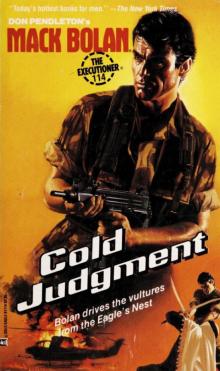 Cold Judgment
Cold Judgment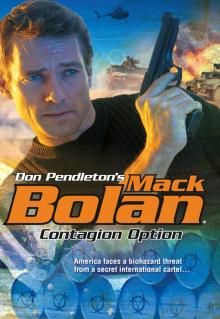 Contagion Option
Contagion Option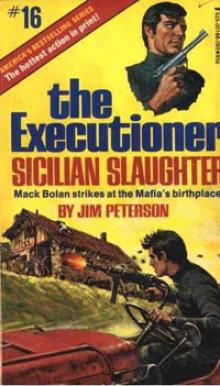 Sicilian Slaughter te-16
Sicilian Slaughter te-16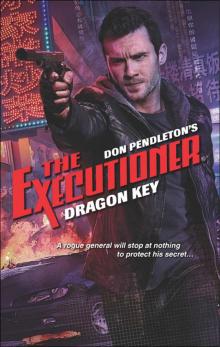 Dragon Key
Dragon Key Terminal Velocity
Terminal Velocity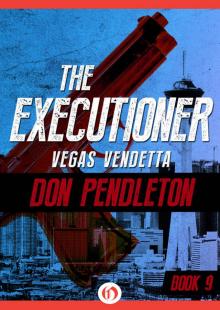 Vegas Vendetta
Vegas Vendetta Ashes To Ashes
Ashes To Ashes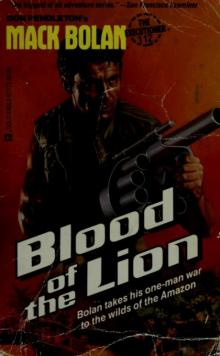 Blood of the Lion
Blood of the Lion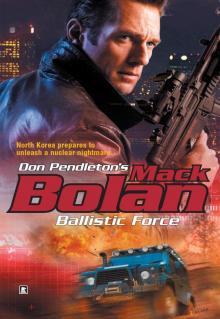 Ballistic Force
Ballistic Force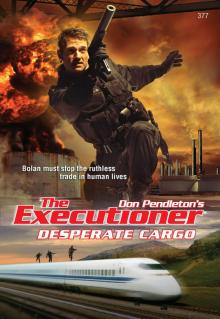 Desperate Cargo
Desperate Cargo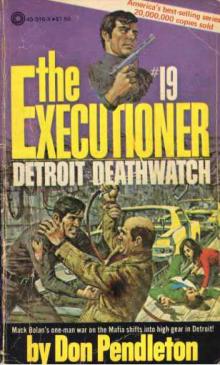 Detroit Deathwatch te-19
Detroit Deathwatch te-19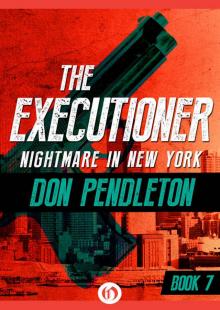 Nightmare in New York
Nightmare in New York Killpath
Killpath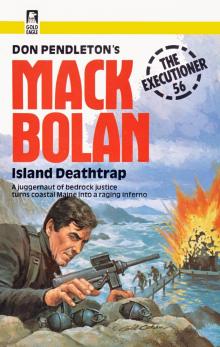 Executioner 056 - Island Deathtrap
Executioner 056 - Island Deathtrap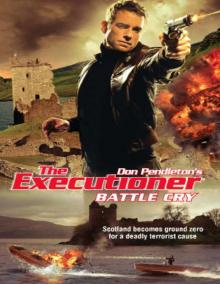 Battle Cry
Battle Cry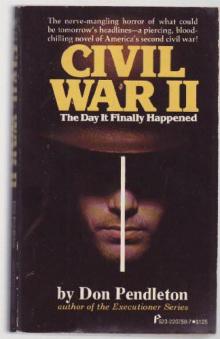 Don Pendleton - Civil War II
Don Pendleton - Civil War II Copp In The Dark, A Joe Copp Thriller (Joe Copp Private Eye Series)
Copp In The Dark, A Joe Copp Thriller (Joe Copp Private Eye Series) China Crisis (Stony Man)
China Crisis (Stony Man)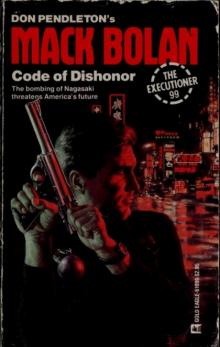 Code of Dishonor
Code of Dishonor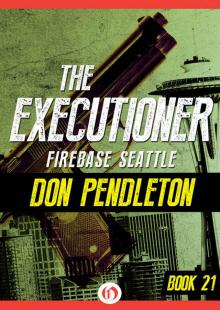 Firebase Seattle
Firebase Seattle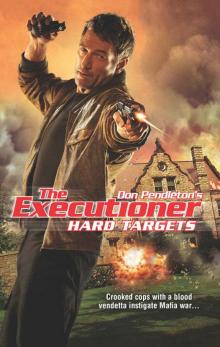 Hard Targets
Hard Targets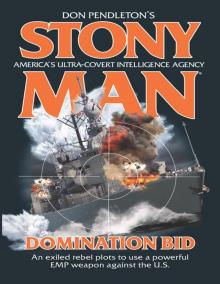 Domination Bid
Domination Bid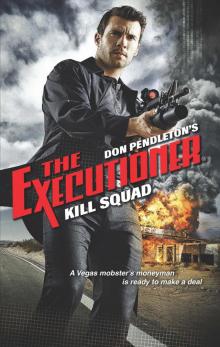 Kill Squad
Kill Squad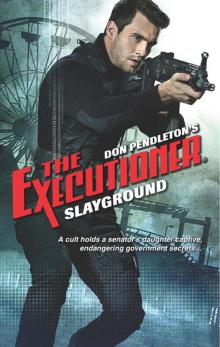 Slayground
Slayground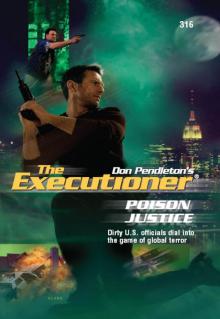 Poison Justice
Poison Justice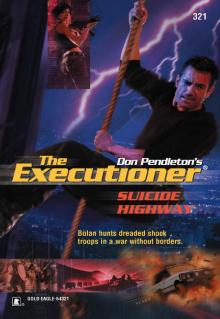 Suicide Highway
Suicide Highway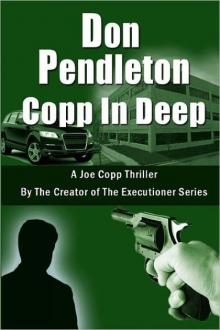 Copp In Deep, A Joe Copp Thriller (Joe Copp Private Eye Series)
Copp In Deep, A Joe Copp Thriller (Joe Copp Private Eye Series)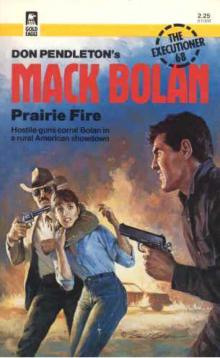 Prairie Fire
Prairie Fire Ninja Assault
Ninja Assault Death Metal
Death Metal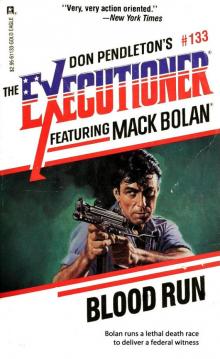 Blood Run
Blood Run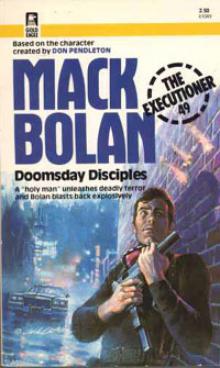 Doomsday Disciples te-49
Doomsday Disciples te-49 Breakout
Breakout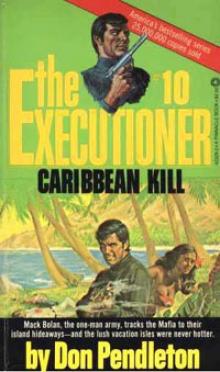 Caribbean Kill te-10
Caribbean Kill te-10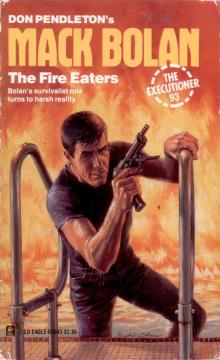 Fire Eaters
Fire Eaters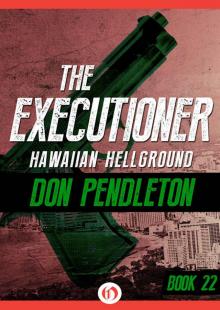 Hawaiian Hellground
Hawaiian Hellground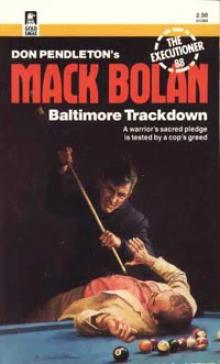 Baltimore Trackdown te-88
Baltimore Trackdown te-88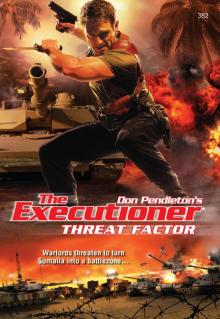 Threat Factor
Threat Factor Don Pendleton's Science Fiction Collection, 3 Books Box Set, (The Guns of Terra 10; The Godmakers; The Olympians)
Don Pendleton's Science Fiction Collection, 3 Books Box Set, (The Guns of Terra 10; The Godmakers; The Olympians) Satan’s Sabbath
Satan’s Sabbath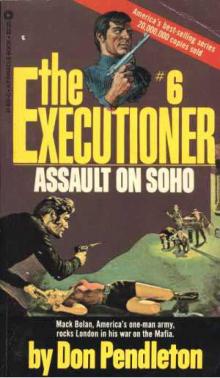 Assault on Soho te-6
Assault on Soho te-6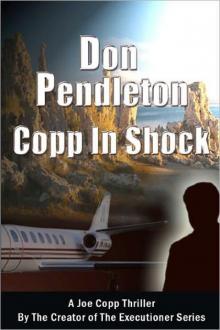 Copp In Shock, A Joe Copp Thriller (Joe Copp Private Eye Series)
Copp In Shock, A Joe Copp Thriller (Joe Copp Private Eye Series) California Hit te-11
California Hit te-11 Chicago Wipe-Out te-8
Chicago Wipe-Out te-8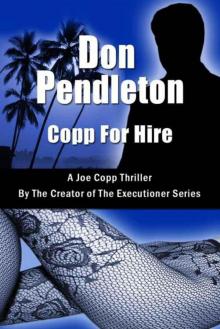 Copp For Hire, A Joe Copp Thriller (Joe Copp Private Eye Series)
Copp For Hire, A Joe Copp Thriller (Joe Copp Private Eye Series)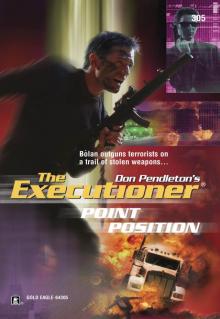 Point Position
Point Position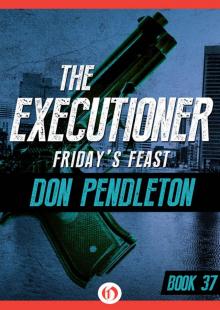 Friday’s Feast
Friday’s Feast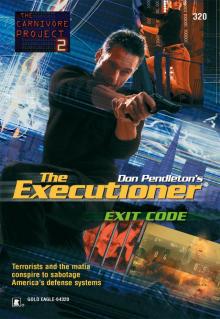 Exit Code
Exit Code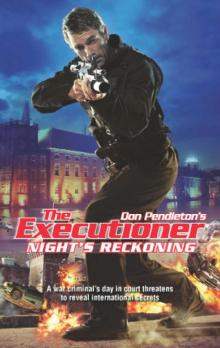 Night's Reckoning
Night's Reckoning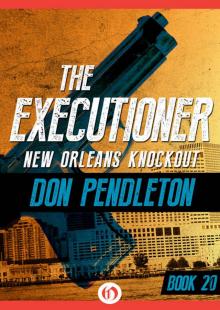 New Orleans Knockout
New Orleans Knockout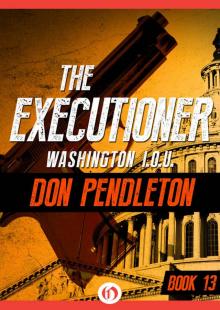 Washington I.O.U.
Washington I.O.U. California Hit
California Hit Blood Vendetta
Blood Vendetta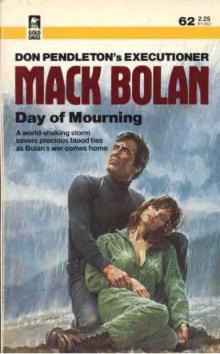 Day of Mourning te-62
Day of Mourning te-62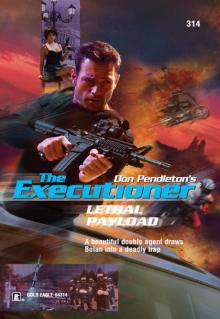 Lethal Payload
Lethal Payload Boston Blitz
Boston Blitz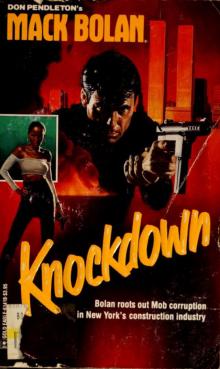 Knockdown
Knockdown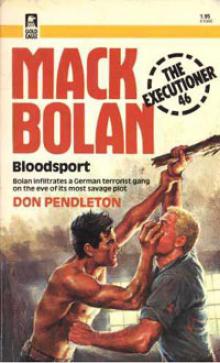 Blood Sport te-46
Blood Sport te-46 Council of Kings te-79
Council of Kings te-79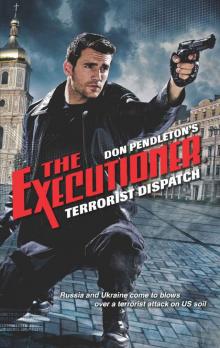 Terrorist Dispatch (Executioner)
Terrorist Dispatch (Executioner)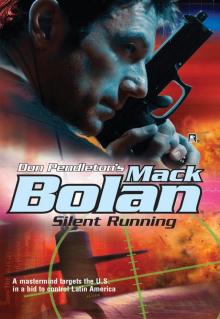 Silent Running
Silent Running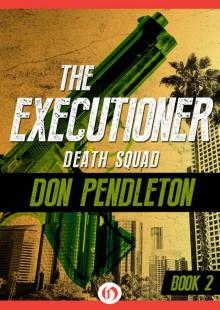 Death Squad
Death Squad Deadly Salvage
Deadly Salvage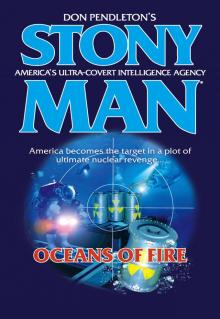 Oceans of Fire
Oceans of Fire Teheran Wipeout
Teheran Wipeout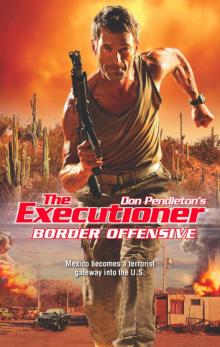 Border Offensive
Border Offensive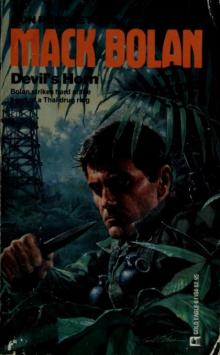 Devil's Horn
Devil's Horn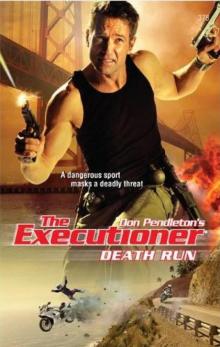 Death Run
Death Run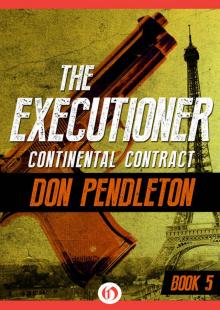 Continental Contract
Continental Contract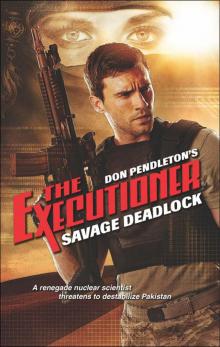 Savage Deadlock
Savage Deadlock Eye to Eye: Ashton Ford, Psychic Detective
Eye to Eye: Ashton Ford, Psychic Detective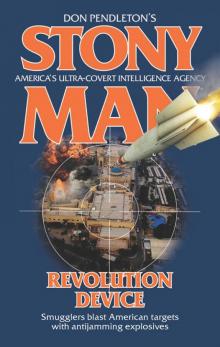 Revolution Device
Revolution Device Heart to Heart: Ashton Ford, Psychic Detective
Heart to Heart: Ashton Ford, Psychic Detective Apocalypse Ark
Apocalypse Ark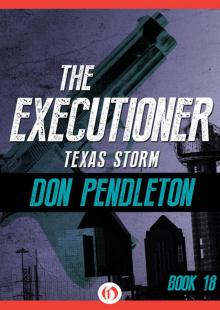 Texas Storm
Texas Storm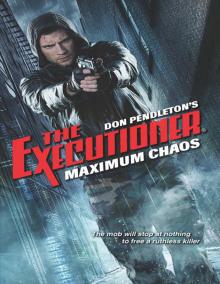 Maximum Chaos
Maximum Chaos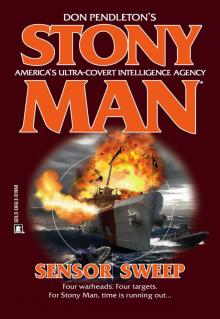 Sensor Sweep
Sensor Sweep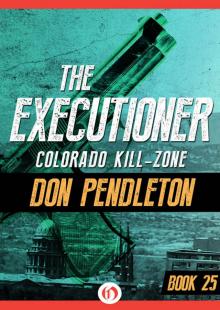 Colorado Kill-Zone
Colorado Kill-Zone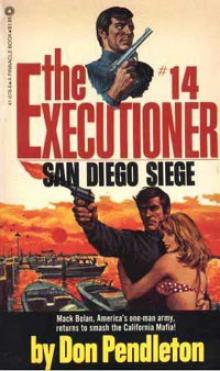 San Diego Siege te-14
San Diego Siege te-14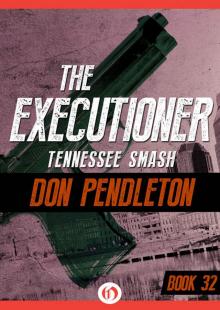 Tennessee Smash
Tennessee Smash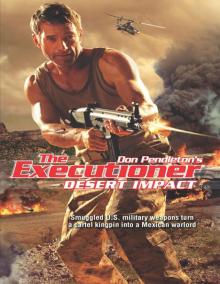 Desert Impact
Desert Impact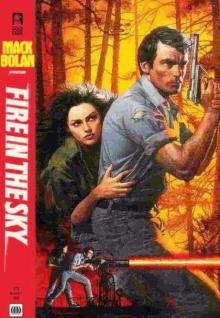 Fire in the Sky
Fire in the Sky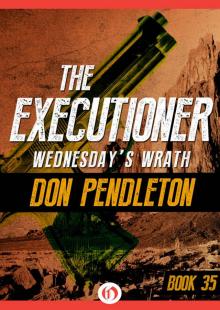 Wednesday’s Wrath
Wednesday’s Wrath Super Bolan - 001 - Stony Man Doctrine
Super Bolan - 001 - Stony Man Doctrine Chain Reaction
Chain Reaction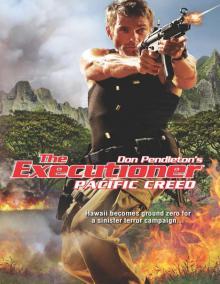 Pacific Creed
Pacific Creed Death List
Death List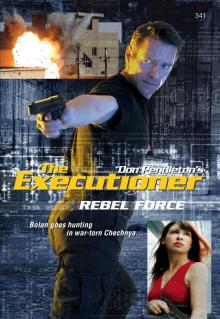 Rebel Force
Rebel Force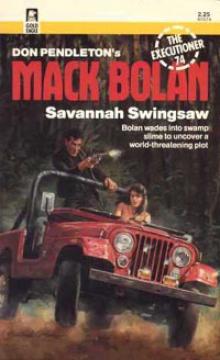 Savannah Swingsaw te-74
Savannah Swingsaw te-74 Heart to Heart
Heart to Heart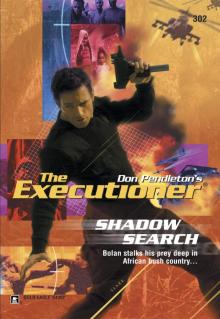 Shadow Search
Shadow Search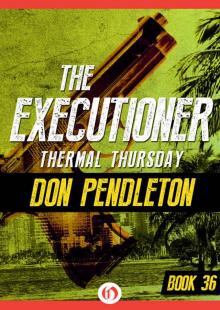 Thermal Thursday
Thermal Thursday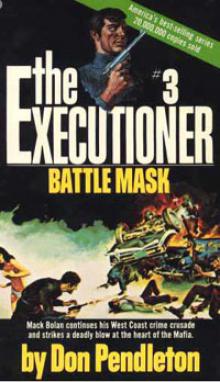 Battle Mask te-3
Battle Mask te-3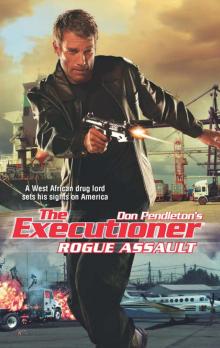 Rogue Assault
Rogue Assault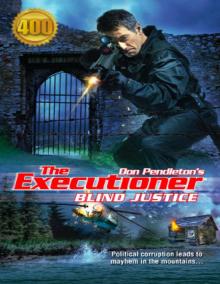 Blind Justice
Blind Justice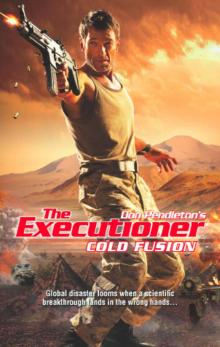 Cold Fusion
Cold Fusion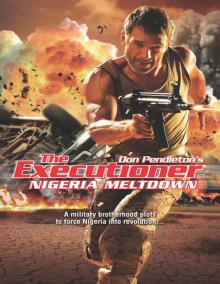 Nigeria Meltdown
Nigeria Meltdown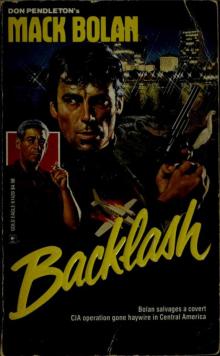 Backlash
Backlash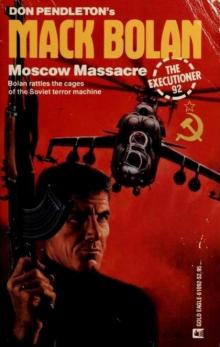 Moscow Massacre
Moscow Massacre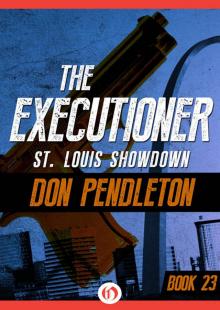 St. Louis Showdown
St. Louis Showdown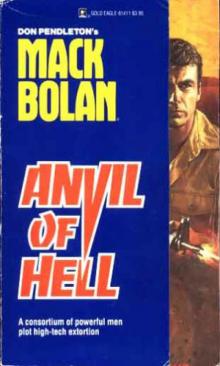 Anvil of Hell
Anvil of Hell Life to Life: Ashton Ford, Psychic Detective
Life to Life: Ashton Ford, Psychic Detective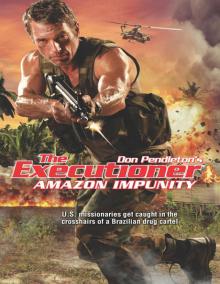 Amazon Impunity
Amazon Impunity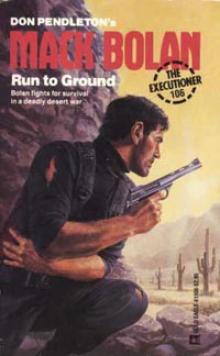 Run to Ground te-106
Run to Ground te-106 Save the Children te-94
Save the Children te-94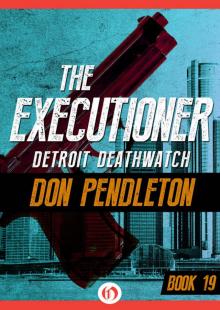 Detroit Deathwatch
Detroit Deathwatch Shadow Hunt
Shadow Hunt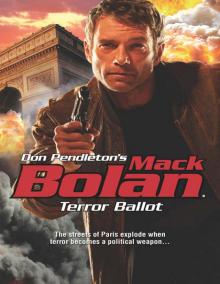 Terror Ballot
Terror Ballot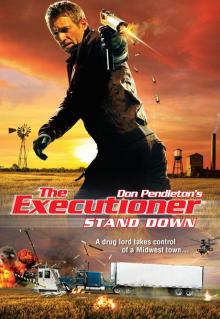 Stand Down
Stand Down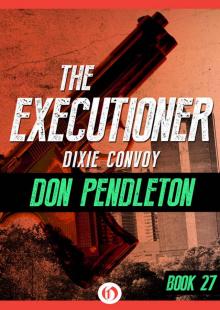 Dixie Convoy
Dixie Convoy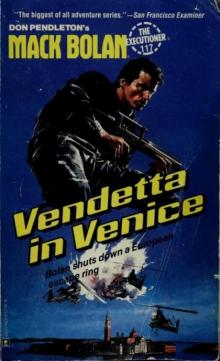 Vendetta in Venice
Vendetta in Venice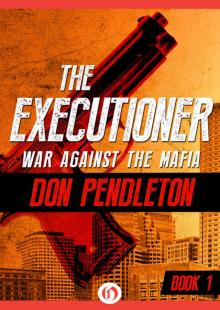 War Against the Mafia
War Against the Mafia Assassin's Tripwire
Assassin's Tripwire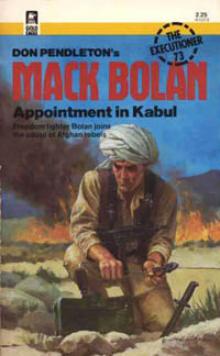 Appointment in Kabul te-73
Appointment in Kabul te-73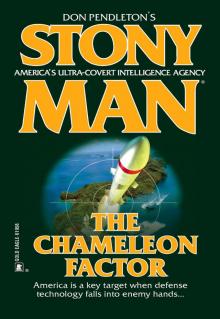 The Chameleon Factor
The Chameleon Factor Pirate Offensive
Pirate Offensive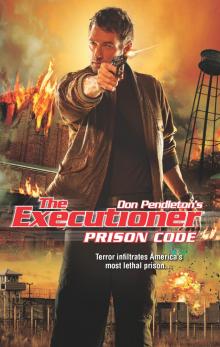 Prison Code
Prison Code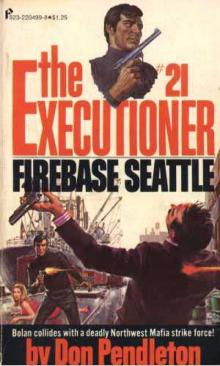 Firebase Seattle te-21
Firebase Seattle te-21 Ground Zero
Ground Zero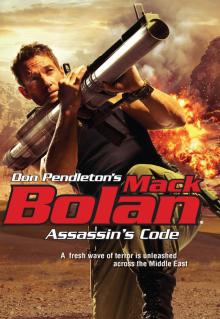 Assassin's Code
Assassin's Code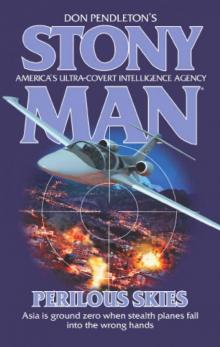 Perilous Skies (Stony Man)
Perilous Skies (Stony Man)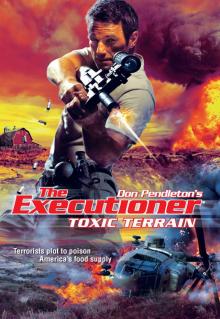 Toxic Terrain
Toxic Terrain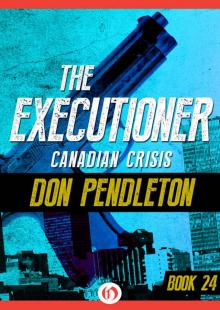 Canadian Crisis
Canadian Crisis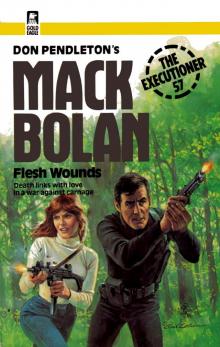 Executioner 057 - Flesh Wounds
Executioner 057 - Flesh Wounds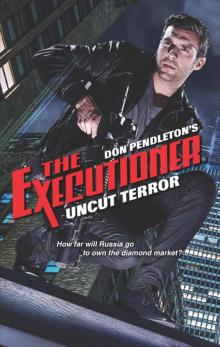 Uncut Terror
Uncut Terror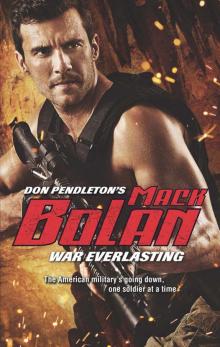 War Everlasting (Superbolan)
War Everlasting (Superbolan)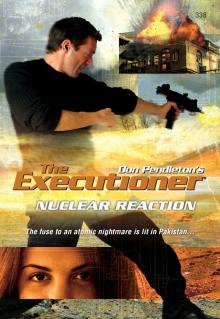 Nuclear Reaction
Nuclear Reaction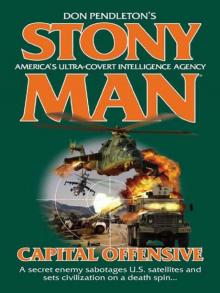 Capital Offensive (Stony Man)
Capital Offensive (Stony Man)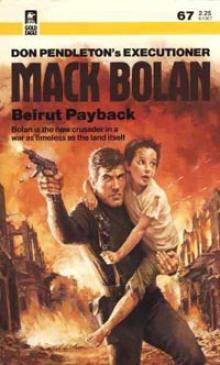 Beirut Payback te-67
Beirut Payback te-67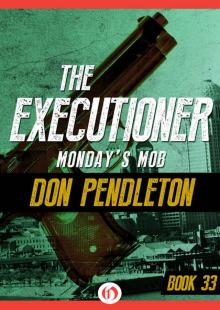 Monday’s Mob
Monday’s Mob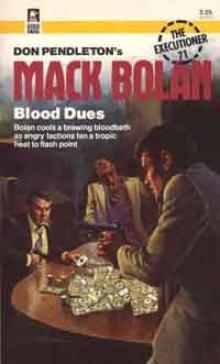 Blood Dues te-71
Blood Dues te-71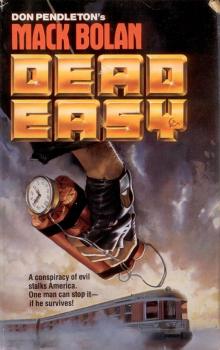 Dead Easy
Dead Easy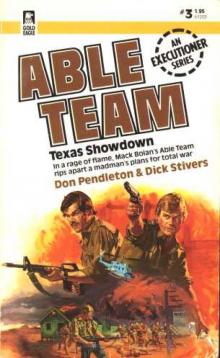 Texas Showdown at-3
Texas Showdown at-3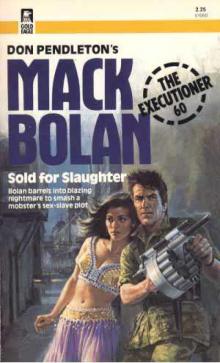 Sold for Slaughter
Sold for Slaughter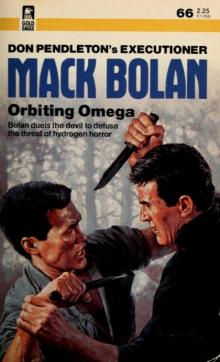 Orbiting Omega
Orbiting Omega Copp On Ice, A Joe Copp Thriller (Joe Copp Private Eye Series)
Copp On Ice, A Joe Copp Thriller (Joe Copp Private Eye Series)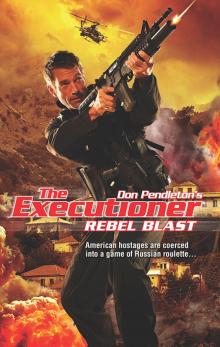 Rebel Blast
Rebel Blast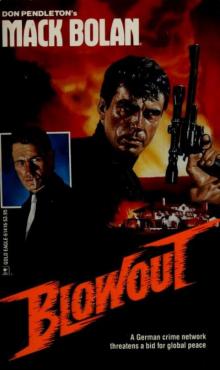 Blowout
Blowout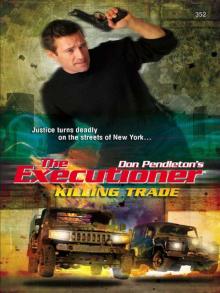 Killing Trade
Killing Trade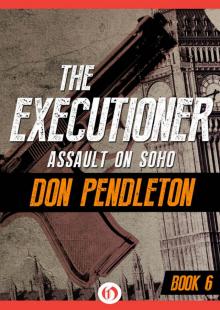 Assault on Soho
Assault on Soho Season of Slaughter
Season of Slaughter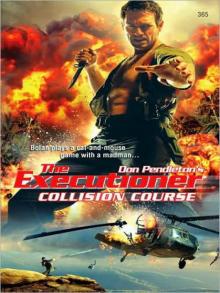 Collision Course
Collision Course Shock Waves
Shock Waves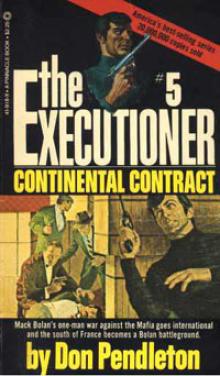 Continental Contract te-5
Continental Contract te-5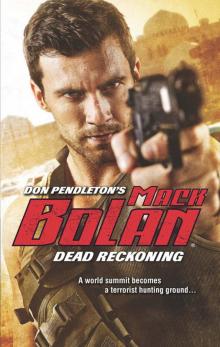 Dead Reckoning
Dead Reckoning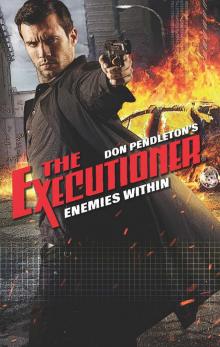 Enemies Within
Enemies Within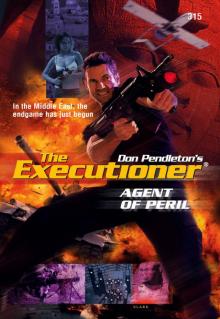 Agent of Peril
Agent of Peril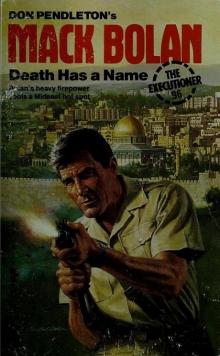 Death Has a Name
Death Has a Name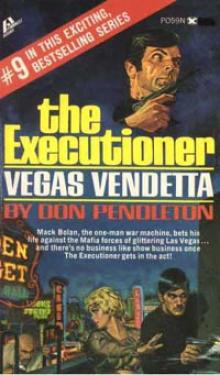 Vegas Vendetta te-9
Vegas Vendetta te-9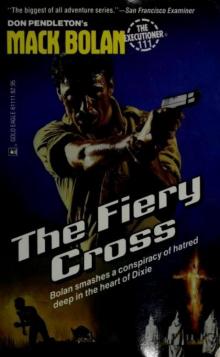 The Fiery Cross
The Fiery Cross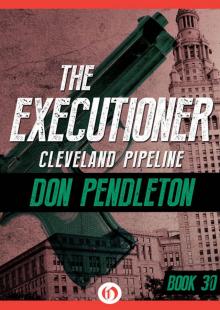 Cleveland Pipeline
Cleveland Pipeline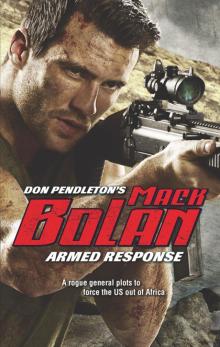 Armed Response
Armed Response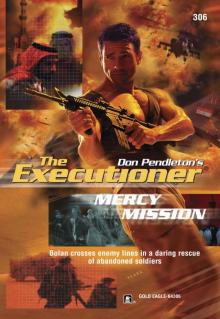 Mercy Mission
Mercy Mission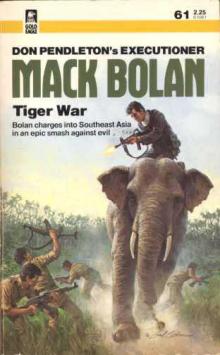 Tiger War te-61
Tiger War te-61 Renegade Agent te-47
Renegade Agent te-47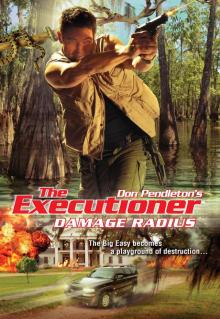 Damage Radius
Damage Radius Eye to Eye
Eye to Eye Acapulco Rampage
Acapulco Rampage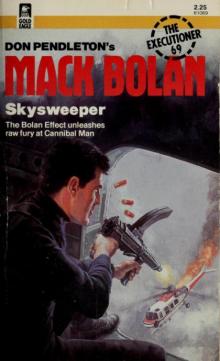 Skysweeper
Skysweeper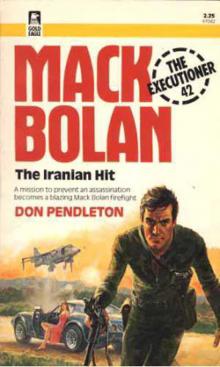 The Iranian Hit te-42
The Iranian Hit te-42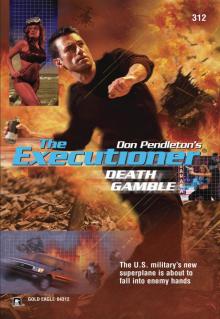 Death Gamble
Death Gamble Rebel Trade
Rebel Trade Predator Paradise
Predator Paradise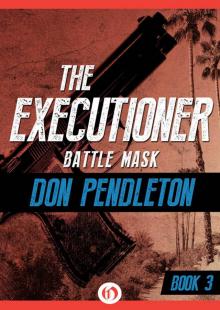 Battle Mask
Battle Mask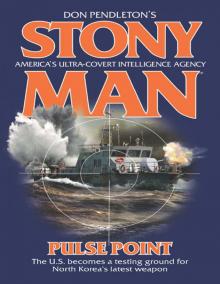 Pulse Point
Pulse Point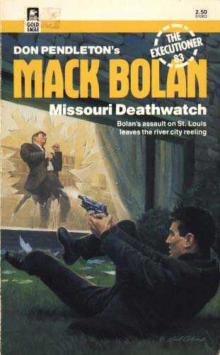 Missouri Deathwatch
Missouri Deathwatch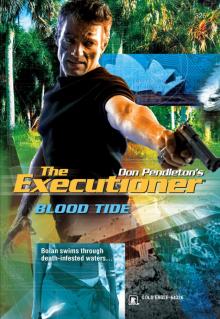 Blood Tide
Blood Tide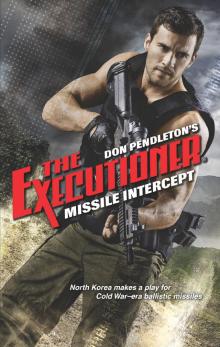 Missile Intercept
Missile Intercept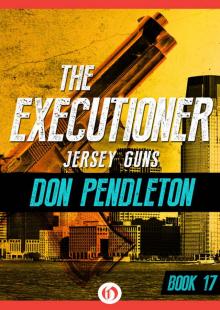 Jersey Guns
Jersey Guns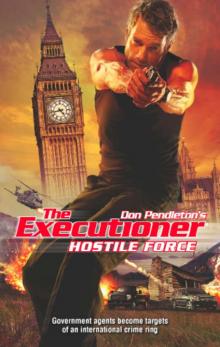 Hostile Force
Hostile Force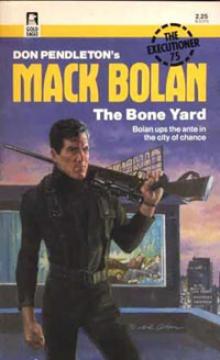 The Bone Yard te-75
The Bone Yard te-75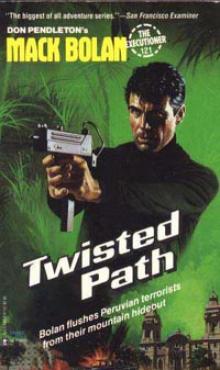 Twisted Path te-121
Twisted Path te-121 Mind to Mind
Mind to Mind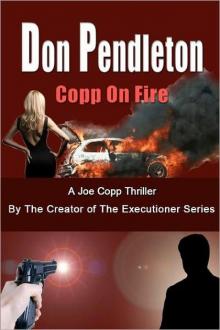 Copp On Fire, A Joe Copp Thriller (Joe Copp, Private Eye Series)
Copp On Fire, A Joe Copp Thriller (Joe Copp, Private Eye Series)